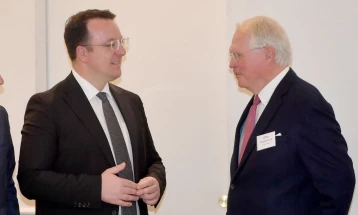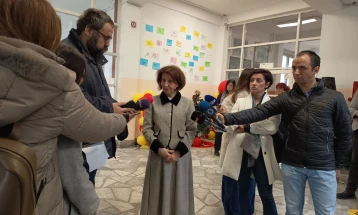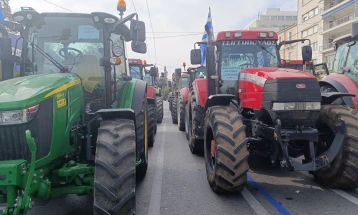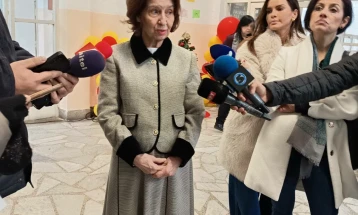Number of primary and secondary students down ten percent in a decade: research
- In the last decade, the number of students in primary and secondary education in the country decreased by 27,000. The decrease in the number of students is especially prominent in secondary education, where in just 10 years the number of students decreased by 20 percent, or 17,000 students, while in primary education there is a five percent decrease, or 10,000 students, according to an analysis by the Center for Civil Communications (CCC), using data from the State Statistical Office, published on Monday.
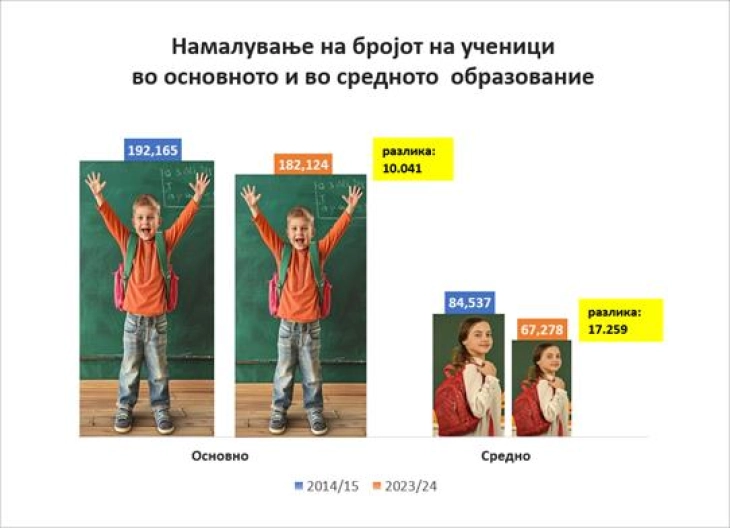
Skopje, 2 September 2024 (MIA) - In the last decade, the number of students in primary and secondary education in the country decreased by 27,000. The decrease in the number of students is especially prominent in secondary education, where in just 10 years the number of students decreased by 20 percent, or 17,000 students, while in primary education there is a five percent decrease, or 10,000 students, according to an analysis by the Center for Civil Communications (CCC), using data from the State Statistical Office, published on Monday.
According to the research, two-thirds of municipalities experience a student shortage, while there is an increase in ten Skopje municipalities and in 9 other municipalities outside the Skopje region.
The largest decrease in the number of pupils in total is in the municipality of Gazi Baba, where in the last school year there were as many as 2,389 fewer pupils than ten years ago. Tetovo is next on the list where there were almost 1,500 fewer students, including Centar municipality, Struga, Kumanovo, and Gostivar with a decrease of one thousand students.
On the contrary, the number of students increased in at least ten municipalities in the Skopje region, and with it the City of Skopje as a whole.
"Butel and Karposh municipalities experienced the largest increase of students. The former experienced an increase of 2,000 students, or 59 percent, and the latter sees 2,500 primary students more compared to ten years ago, or 56 percent. Nine municipalities outside of Skopje have high student enrollment, but altogether there have been only 1,000 students more compared to ten years ago. Those are relatively small municipalities such as: Chashka, Tearce, Resen, and Krushevo. Of the larger cities, only Strumica has seen an increase in the number of elementary school students by about 400, or 9 percent," the CCC said in a press release.
A decrease in the number of pupils for secondary education has been observed in as many as 73 municipalities, or 90 percent of the municipalities, including the City of Skopje as a whole, including almost all larger cities: Tetovo, Struga, Kichevo, Strumica, Gostivar, Kumanovo, and Shtip.
Skopje saw a decline of 10 percent in the last school year, or 2,727 students.
In comparison, seven municipalities in total saw an increase, five of which are from the Skopje region and three from other regions, such as Brvenica, Bogovinje, and Bogdanci. Four of the municipalities with an increase are those in which a secondary school has been opened in the last ten years. Excluding these municipalities, only Aerodroom, Centar, and Bogdanci saw an increase.
"In all seven municipalities where there is an increase in the number of high school students, the total increase is 1,136, compared to a decrease of 18,000 students in the other 73 municipalities," the CCC points out.
The number of teachers, however, in the country increased.
"Namely, the previous school year had 1,203 teachers more compared to ten years ago, which is an increase of 7 percent. Their numbers, on the other hand, have reduced by 5 percent in secondary education, along with the 20 percent decline in student enrollment," the press release notes. ssh/ik/
Photo: Center for Civil Communications

